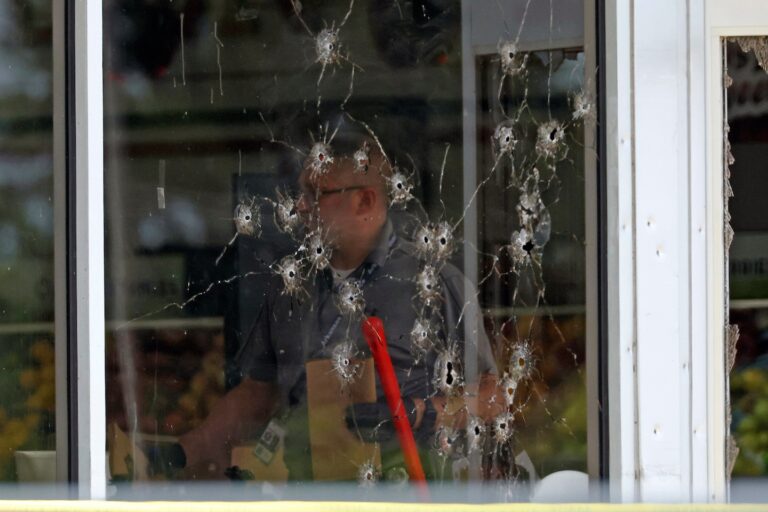Overall, gun deaths hit a 30-year high in 2021 due to increases in homicides and suicides, according to the advisory. In 2022, more than half of gun deaths were suicides, and 40% of gun deaths were homicides.
“I want people to fully understand the impact that gun violence has on our country and I want them to see this as a public health issue,” Mursi said in an interview. “I know it’s polarizing and I know it’s politicized, but if we can see this as a public health issue, then we can come together and implement public health solutions.”
As of 2020, firearm-related injuries are the leading cause of death among children and adolescents ages 1 to 19 in the United States. Firearm-related youth deaths exceed deaths from traffic accidents, cancer, and heart disease.
Murthy said one of the reasons for the recommendation is the increase in mass shootings over the past decade, which has had a significant impact on the mental health and well-being of the country.
Deaths from gun violence are a uniquely American phenomenon. In 2015, the U.S. had a firearm-related death rate 11.4 times higher than 28 other high-income countries, according to data from the Centers for Disease Control and Prevention and the World Health Organization. The disparity is even greater among young people: American children up to age 14 accounted for 90 percent of firearm-related injuries in that age group across the 29 countries studied.
“We are definitely an exception, and not in a good way,” Murthy said. “We have parents who are not comfortable sending their kids to school because of school shootings.”
Despite the high number of gun deaths in the United States, legislation often prevents the implementation of stricter gun control laws, perpetuating lax laws that allow mass shootings to occur. Research also shows that states with weaker gun laws are more likely to have mass shootings, according to an analysis by the Harvard T.H. Chan School of Public Health.
The report also highlights the impact that mass shootings, which account for about 1% of all gun deaths, are becoming more frequent. The recommendations state that mass murders, defined as incidents involving four or more victims in addition to the perpetrator, are more likely to involve women, whites, and children than other homicides.
According to the Surgeon General’s recommendation: High school students who experience a school shooting are 20 percent more likely to skip school due to safety concerns than their peers who don’t experience a school shooting.
“I remember meeting with a group of high school students who said they were walking around their neighborhood and constantly heard gunfire and it made them feel unsafe walking around their neighborhood,” Murthy said.
Health insurance claims from 2007 to 2021 revealed that youth ages birth to 19 who were injured by firearms experienced a 117% increase in pain disorders and a 68% increase in psychiatric disorders compared to youth not injured by gun violence.
Gun violence does not strike equally: The report cites a 2019 national study by Northwestern University that found that gun homicides and poverty go hand in hand, with poor residents being 27% more likely to die from a gun.
Murthy said he’s concerned the public doesn’t understand the psychological trauma caused by the gun violence epidemic.
“There are people who witnessed these events, and there are families who are suffering the loss of loved ones,” Murthy said. “All of them experience negative mental health effects.”
In the United States, black people have the highest risk of death by firearm, at 27 per 100,000 people, compared with 6.2 for all other racial and ethnic groups combined. White people over the age of 45 have the highest firearm suicide rate at 14.8 per 100,000 people, while American Indians or Alaska Natives have the highest firearm suicide rate under the age of 45 at 12.3 per 100,000 people. Firearm suicide rates among veterans have also increased significantly.
The report calls for a public health approach to reducing gun violence. Recommendations include increasing funding for gun violence research to develop prevention strategies, including community violence interventions. According to the Surgeon General’s recommendations, these interventions involve “trusted communicators and practitioners” who prevent violent confrontations by disseminating resources, such as health care and employment services, within communities.
The report calls for measures to put distance between guns and people who are at risk of harming themselves or others, such as laws to prevent children from having access to guns, mandatory universal background checks for gun transactions (including gifts), and bans on assault weapons for civilians.
“We have been tackling complex and difficult public health challenges … and by taking a thoughtful, science-based public health approach, we have been able to make real progress,” Murthy said.

